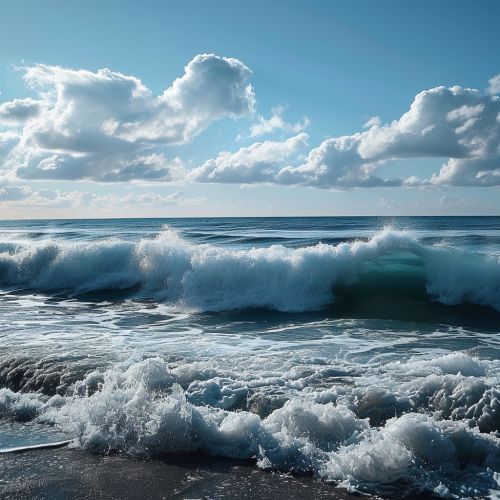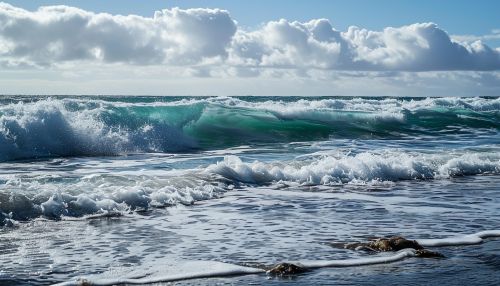Wave Power
Introduction
Wave power is the capture of energy from ocean waves or from pressure fluctuations below the surface. Wave power is a form of renewable energy that is harnessed from the movement of the ocean's waves. This energy is then converted into electricity, which can be used to power homes, businesses, and industries.


History
The concept of harnessing wave power for practical use dates back to at least the 18th century. The first known patent to use energy from ocean waves dates back to 1799 and was filed in Paris, France. However, it wasn't until the 20th century that the development of wave power technology began in earnest.
Principles of Wave Power
Wave power is generated by the up and down motion of floating devices placed on the surface of the ocean. This motion is caused by the kinetic energy of the ocean's waves. The energy is then converted into mechanical energy by the wave power device, which can then be converted into electrical energy.
Types of Wave Power Devices
There are several different types of wave power devices, each with its own unique method of harnessing the energy of the ocean's waves. These include point absorbers, attenuators, overtopping devices, and oscillating water columns.
Point Absorbers
Point absorbers are a type of wave power device that floats on the surface of the ocean and absorbs energy from all directions. The device is anchored to the ocean floor and the motion of the waves causes the device to move up and down. This motion is then converted into electrical energy.
Attenuators
Attenuators are long, multi-segment floating structures oriented parallel to the direction of the waves. The differing wave height along the length of the device causes flexing where the segments connect, and this motion is converted into electrical energy.
Overtopping Devices
Overtopping devices are floating reservoirs that use wave momentum to elevate water to a reservoir above sea level. The water is then released, and this flow is used to generate electricity.
Oscillating Water Columns
Oscillating water columns are a type of wave power device that uses the rise and fall of waves to push air in and out of a column. This air flow is used to power a turbine, which generates electricity.
Advantages and Disadvantages of Wave Power
Like all forms of renewable energy, wave power has both advantages and disadvantages.
Advantages
Wave power is a clean, renewable source of energy. It does not produce harmful emissions or waste products. In addition, wave power is a reliable source of energy, as ocean waves are constant and predictable.
Disadvantages
However, wave power also has several disadvantages. Wave power devices can be expensive to build and maintain. In addition, they can be affected by severe weather conditions, and their presence can have a negative impact on marine life.
Future of Wave Power
Despite these challenges, the future of wave power looks promising. Advances in technology are making wave power devices more efficient and cost-effective. In addition, there is growing recognition of the need for clean, renewable sources of energy to combat climate change.
